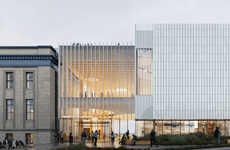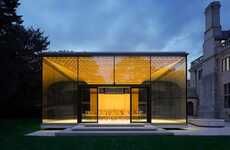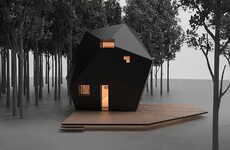
Kohn Shnier and ERA Architects Renovate a U of T Building
Kalin Ned — March 6, 2023 — Art & Design
References: kohnshnierarchitects & dezeen
It is really important for architects, designers, companies, and public institutions to engage with upgraded historic building projects as these are really important for meeting requirements of accessibility and promises of sustainability. After all, most (if not all) historic buildings are not efficient in these two categories.
Recently, an upgraded historic building project was completed by Canadian studios Kohn Shnier and ERA Architects. The update took place on the grounds of the University of Toronto's University College which was built in 1859 and is one of the oldest buildings on campus. In order to make the 2,230 square meter project more welcoming to students, Kohn Shnier and ERA Architects installed various "contemporary interventions." One of them, for instance, is an elevator shaft.
Image Credit: Doublespace
Recently, an upgraded historic building project was completed by Canadian studios Kohn Shnier and ERA Architects. The update took place on the grounds of the University of Toronto's University College which was built in 1859 and is one of the oldest buildings on campus. In order to make the 2,230 square meter project more welcoming to students, Kohn Shnier and ERA Architects installed various "contemporary interventions." One of them, for instance, is an elevator shaft.
Image Credit: Doublespace
Trend Themes
1. Upgraded Historic Building Projects - The trend of upgrading historic building projects is on the rise as they are important for meeting requirements of accessibility and promises of sustainability and making them more contemporary and modern.
2. Contemporary Interventions in Historic Buildings - The trend of adding contemporary interventions in historic buildings, such as elevators and modern technology, is increasing to make them more welcoming and accessible to people.
3. Sustainable Upgrades of Historic Buildings - The trend of upgrading historic buildings to meet sustainability standards is emerging as it helps preserve heritage while also ensuring a better environment for occupants.
Industry Implications
1. Architecture and Design - The architecture and design industry could benefit from these trends by offering design and renovation services that incorporates modern technology while preserving heritage.
2. Education - The education industry could benefit from these trends by collaborating with architects and designers to upgrade historic buildings on campuses to make them more accessible and welcoming for students.
3. Real Estate - The real estate industry could benefit from these trends by investing in historic buildings, upgrading them to meet modern standards and meet LEED certifications, while also preserving their heritage and history.
3.1
Score
Popularity
Activity
Freshness























